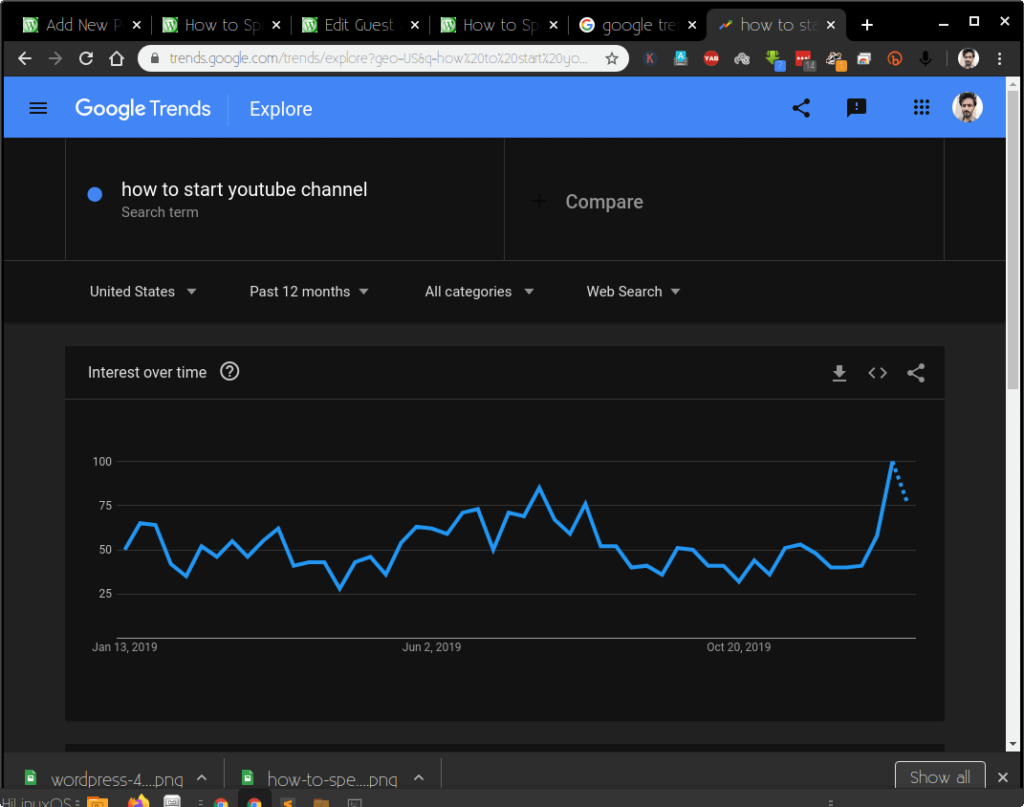A long-tail keyword is a long keyword with four to five phrases that are very specific to what you are selling. When somebody searches ”travel guide” that is a short tail keyword that is one to two phrases with high search volumes.
SEO For WordPress: How To Make WordPress Site SEO Friendly – Updated for 2023
When somebody searches ”best travel guide books” that is a long-tail keyword with a four to five words search phrases which yield lower search volume.
Benefits of targeting long-tail keywords
1. Attract users late in the buying cycle
People that search for more specific phrases likely know of what they want and are more likely to convert.
- Someone searching for ”iPhone” is likely just browsing around for more information.
- Someone searching for ”iPhone 6s plus specs” is more likely to purchase.
2. Lower competition leads to lower-ranking difficulty

Competition for ranking with shorter keywords is fierce but visits yield lower returns on investment. Using long-tail keywords may achieve less traffic but yields a higher return on investment.
You will attract the audience you are looking for and they will be far closer to the point of purchase than that of your competitors.
3. Less competition means low costs
Long-tail keywords are valuable to businesses who want their content to rank high in Google searches and advertisers who run paid search marketing campaigns. The cost per click on long-tail keywords is significantly lower since there is less competition.
How To Write Effective Meta Description in WordPress & Persuade The Searcher To Click On Your Link.
Long-tail keywords on your AdWords campaigns can get you higher ad rankings without having to pay a premium for every click. The key is to find reliable and renewable long-tail keywords unique to you.
How to find long-tail keywords in any niche
The first step is to use the mission of your company or business to define your long-tail keyword. Your mission makes your product or services unique. The second step is to do your research. There is no substitute for research.
Here’s a list of some of the best places to find long-tail keywords in any niche.
1. Google trends

This free feature gives you insight on how any keyword is trending on the Web in terms of search volume and related searches. When explored, you can find a list of long-tail keywords that you can use.
2. Google AdWords keyword planner
You can set up a Google AdWords account to gain access to its keyword planning tool. By entering your website’s URL into the first field of the keyword planner, and selecting ideas, you can discover more long-tail keyword terms.
3. Google Auto-complete

Google has an auto-complete algorithm inbuilt on its search engine for users. By experimenting with this feature, you can find long-tail keywords that might interest your target market.
4. Google’s related suggestions

Another usage of the Google search engine that offers long-tail keyword ideas is its ”searches related to” at the bottom of its search engine results.
5. Answer the public
This is a great resource where you can source question-based keywords which are long-tail keywords. `All you have to do is type in your broad keyword or topic and then you will get specific questions. You can use these questions in your content as long-tail keywords to drive more traffic to your site` – says Sarah Hunter, the SEO specialist at the HR software.
6. Online forums and boards
Aside from using search engines, some consumers use online forums and boards to search for solutions. You can use this to get keywords and issues that people want solutions for.
7. Soolve

This is an online keyword generator that collects keywords from other sources other than Google. This can help you get keywords that are not common like those searched from Google and other search engines.
8. Word Stream
You can also find long-tail keywords with Word Stream’s free keyword research tool by just entering the word you need to research. The tool returns the top 10 most popular keywords.
9. Word tracker
This tool provides 1000 keywords for every word search, provides competitor data on each keyword and offers keyword phrases that are very specific to whatever you are selling.
Checking the keyword search demand
After researching for a long-tail keyword in your niche, you need to validate Google’s search demand.
- Type those keywords into Google keyword planner and get their search volume.
- Find out which long-tail keywords have more average monthly searches than the other.
- Prioritize using the keywords with higher search volumes to get more traffic.
Building your content
After your research, the last step is to build SEO content for your website. This means that you need to create multiple pages that aim at snagging searchers who use long-tail keywords.
For example, if you want to rank ”easy oil-based painting” and your target audience is beginners, your long-tail keywords will be:
- Oil-based painting for beginners
- Easy oil-based painting ideas
- Oil-based painting step by step
- Oil-based painting landscape technique
Remember your unique pages need to be linked to your main offering but focused on a specific long-tail niche. The downside of this approach is that you need to come up with a lot of content that can be very tough, especially if you are not a writer.
Luckily, there are several online writing services. These services have professional writers that can help you create content such as ebooks, web content, and articles. You can alsi hire professionals ar FiverPro.
Conclusion
Using long-tail keyword variations in your marketing campaigns is a win-win. It yields better search rankings, more qualified search traffic and lower cost per click. Long-tail search phrases do not rely on repetitiveness but targeting.
Understanding how to use a keyword research tool and targeting is the basis of SEO. The downside of focusing on long-tail keywords is lower traffic because of phrases that are too specific. This might not get you enough traffic to sustain your business.